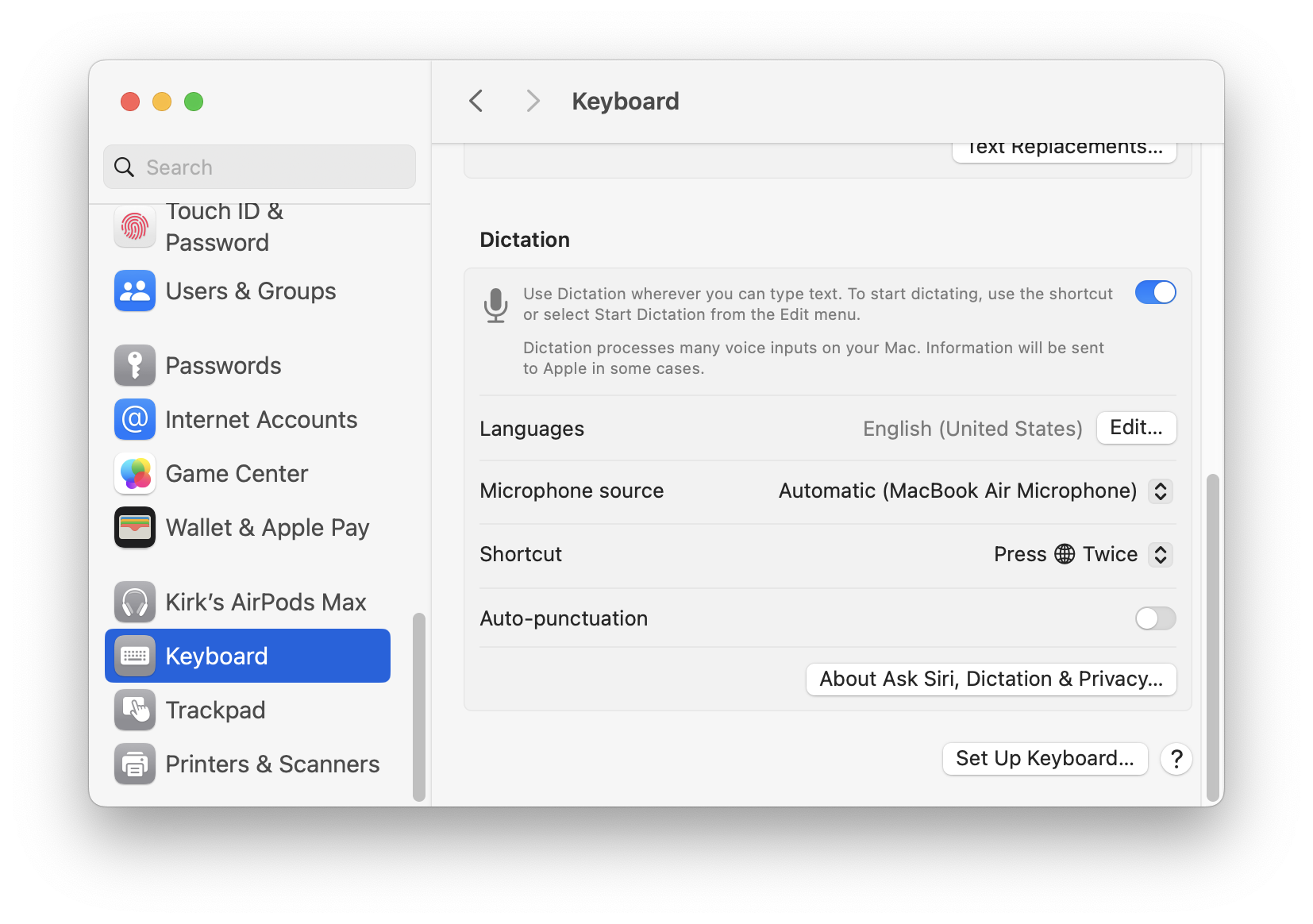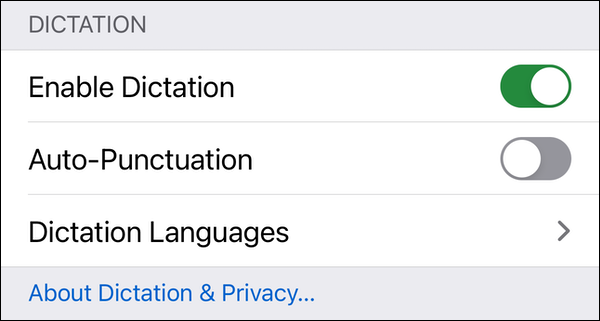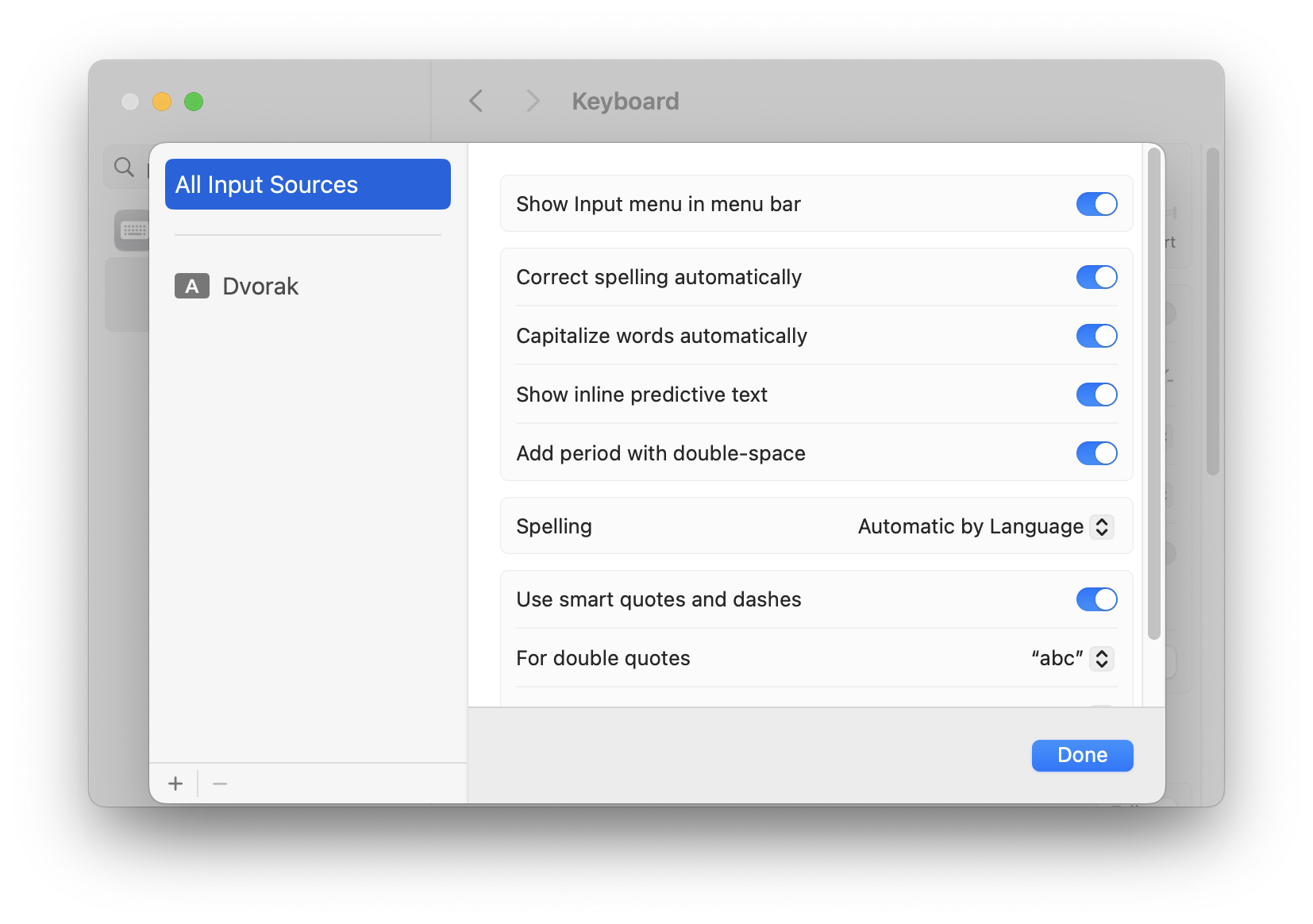Save time typing with dictation and predictive text in macOS Sonoma, iOS 17, and iPadOS 17
Posted on
by
Kirk McElhearn

Macs, iPhones, and iPads have had built-in voice dictation features for many years, and iOS 17 and iPadOS 17 saw major enhancements to this last year. With the release of macOS Sonoma, Macs get the same dictation features available on the iPhone and iPad, and all three platforms get a useful new predictive text feature. These features can save you a lot of time typing. Here’s how.
What is voice dictation?
Voice dictation, or speech-to-text, is when a computing device translates your spoken words into words on a page. This has been available on computers for more than two decades, notably through software such as Dragon Dictate and Dragon Naturally Speaking, by Nuance. When using this software, you train the language model by reading a number of texts, and the software learns from the corrections you make.
The company no longer sells this software for Mac, and Apple’s built-in dictation feature cannot be trained, so it doesn’t learn from your voice and the way you write. But Apple’s built-in dictation feature has improved in quality and accuracy over the years and is now a viable replacement. It’s worth noting that Apple’s Siri voice-recognition is powered by Nuance technology, and that Nuance was bought out by Microsoft in 2021.
Speech-to-text is not easy. People’s voices and accents are different, and there are many homophones in English (and other languages), such as there, their, and they’re, so dictation software can’t simply identify individual words, but needs to be able to understand context to convert speech to text. It is never 100% accurate, and this is why Apple’s recent addition of a feature allowing you to dictate and type at the same time, available in 2022 on the iPhone and iPad, and in 2023 in macOS Sonoma, can help you be more efficient.
There are a number of strategies you should use if you wish to dictate efficiently. I wrote an article more than 10 years ago, explaining how to do this, and all of these points are still valid.
How to enable dictation on Macs, iPhones, and iPads
On the Mac, go to System Settings > Keyboard, then scroll down. Toggle on Dictation, then set a shortcut. Choose which languages you want to use for dictation; you can choose multiple languages, and your Mac will be able to detect which one you’re using.

On iPhone or iPad, go to Settings > General > Keyboard, toggle on Dictation, then set languages. There’s no keyboard shortcut to trigger dictation; you tap the microphone icon below the keyboard to turn on dictation.

Note that the microphone icon in the text field in Messages doesn’t enable dictation, but allows you to send an audio message.
How to dictate and type at the same time
It may seem counterintuitive to dictate and type at the same time, but there is a reason for this. As you dictate, you will find that the accuracy of the transcription is far from 100%. Previously, when you spotted mistakes to correct while dictating, you would have to stop dictating, correct the mistakes, and then pick up again. Now, you can keep the dictation active while you are correcting misunderstood words. If you dictate a lot, this can save you a lot of time. I find that it’s much easier to correct as I go along, rather than waiting until I get to the end of a long paragraph and going back to fix errors.
Another reason is that there are symbols and special characters that are not very easy to dictate. Apple has a support document explaining how to dictate many of these characters, but I find that they don’t always work. And you may need other special characters that you can’t dictate.
When dictating in this mode, you’ll see the blue cursor visible at the end of your dictation, waiting for you to continue. Previously, after you stopped talking for a few seconds, your device would stop listening. At this point, you can type, and when you start dictating again, your Mac picks up its transcription where your cursor is located. So you can also dictate in the middle of a text, rather than just at the end; this is something that may cause problems with dictation software, which needs to remember the locations of words it has transcribed.

Predictive text
With predictive text, your Mac, iPhone, and iPad can complete words and phrases for you. After you type a few letters of a word—depending on the length of the word, and the predictive algorithm—your device may show a suggested completion in gray. Sometimes, this occurs for long words:

Sometimes the suggested completion is multiple words from a common phrase or cliché:

To complete the word or phrase, press or tap the space bar.
As you become familiar with this, you will start to recognize words that you can easily complete by pressing the space bar after typing a few letters. These are generally longer, multi-syllable words, and you may find that if you work with a specialized technical vocabulary there are more words that can be completed in this way.
To enable predictive text on the Mac, go to System Settings > Keyboard > Text Input. This is where you choose which keyboard layouts you use. Click Edit, and you’ll see this:

You can see options here to correct spelling and capitalize words automatically, and to show inline predictive text.
On iOS and iPadOS, go to Settings > General > Keyboard, then enable Predictive in the All Keyboards section. This also gives you options for spell check, automatic correction and capitalization, and other features.
Dictation then vs. now
Dictation on computers used to be a complex process, with expensive software, and it required special microphones so the audio would be good enough for the software to interpret. I have found that the internal microphones on my devices are good enough, but when I need to do a lot of dictation on my Mac, I use an external mic—one that I use for recording podcasts—and this improves accuracy.
If you write a lot and haven’t tried dictation, check it out. The addition of these features to macOS, iOS, and iPadOS is a boon for people who need to create a lot of text documents.
How can I learn more?
 Each week on the Intego Mac Podcast, Intego’s Mac security experts discuss the latest Apple news, including security and privacy stories, and offer practical advice on getting the most out of your Apple devices. Be sure to follow the podcast to make sure you don’t miss any episodes.
Each week on the Intego Mac Podcast, Intego’s Mac security experts discuss the latest Apple news, including security and privacy stories, and offer practical advice on getting the most out of your Apple devices. Be sure to follow the podcast to make sure you don’t miss any episodes.
You can also subscribe to our e-mail newsletter and keep an eye here on The Mac Security Blog for the latest Apple security and privacy news. And don’t forget to follow Intego on your favorite social media channels: ![]()
![]()
![]()
![]()
![]()
![]()
![]()